Pet Insurance 101
What is Pet Insurance?
Pet insurance reimburses you on your veterinary bills when your dog or cat gets sick or injured. Pet insurance helps you afford the best course of treatment, protects against major financial setbacks, and can give you peace of mind as a pet parent. Having a pet insurance plan allows you to focus on getting the best care for your pet without worrying about the financial burden.
When Should I Get Pet Insurance?
It’s important to insure your pet when they’re still healthy, because no pet insurance plan covers pre-existing conditions. Pet insurance coverage does not start immediately, and while Pets Best offers some of the shortest waiting periods in the industry and we don't require an exam to enroll, the earlier you get pet insurance the more likely you'll receive the maximum benefit from it.
Why Do I Need Pet Insurance?
It's a sad fact: dogs and cats get sick and injured just like us humans. We've all heard the horror stories about dogs that had to have their own toys surgically removed after an accidental swallowing. Or the story about the cat that got diabetes or chronic renal failure. Or the pair of Golden Retrievers that developed cancer. The story always ends the same way: the veterinary bills were enormous, making matters worse.
Vet bills will continue to be a challenge for pet parents in the face of rising veterinary costs. The equipment at your vet's office is now human-grade. The same MRI machine used at your doctor's office could be the same one at your veterinarian's clinic. Medical advances and high-end equipment give your pets the best chance at a long, happy, and healthy life, but this advancement often comes with a high price tag.
How Pet Insurance Works
You shouldn't have to worry about getting your pets the best veterinary treatment they deserve. Once you have enrolled, using pet insurance is as easy as:
- Get Treatment
When your pet becomes ill or injured, get treatment from any veterinarian of your choice
- File a Claim
We make it easy with online claim filing, and there is no need to send medical records unless we request them
- Get Cash Back, Fast
We process most claims in five days or less and can deposit them directly in your bank account
Learn more about the Union Plus Pet Insurance program, powered by Pets Best, that offers savings of up to 10% off monthly premiums to union members.

Having pet insurance can help reduce the cost of veterinary bills, but how does it work? Union Plus Pet Health Insurance reimburses cat and dog owners for veterinary expenses when their pets get injured. There are different plans available to help you get the coverage that meets your pet's needs.
5 Reasons to Consider Adding a Wellness Plan to Your Pet Insurance Policy
Pet wellness and routine care plans are an optional add on to pet insurance plans offered by Pets Best, and an easy way to keep your pet as healthy as possible. Annual checkups with your veterinarian allow health changes to be addressed and underlying diseases to be caught early. Here are five aspects of routine veterinary care that are crucial for the overall well-being of your pet.
1. Vaccines
Everyone is familiar with vaccines and why our pets need them. Deadly contagious diseases such as Parvo and Distemper are fully preventable in puppies with a simple vaccine. The same is true of the deadly Feline Leukemia Virus and Panleukopenia virus in cats. All puppies and kittens need to have their full series of vaccines and appropriate boosters as they age. Even older pets need to have their boosters updated to prevent deadly infections.
2. Dental Care
Just like humans, pets need their teeth cleaned too! Dogs and cats have plaque and tartar buildup that leads to dental calculus, gingivitis and painful tooth decay. Severe gum disease is a source of chronic infection which can allow bacteria into the bloodstream. These bacteria can latch onto heart valves causing dangerous heart murmurs; bacteria in the blood can also cause abscesses in the liver and elsewhere in the body. It is important to start routine dental cleanings early in life to prevent the teeth from ever decaying and becoming damaged in the first place.
3. Flea and Tick Prevention
Besides being just plain gross, fleas and ticks can really harm your pet. These tiny parasites harbor diseases that can wreak havoc on your pet’s health. Fleas can carry tapeworms which can be transmitted to your pets, and can also cause severe health issues.. It is important that all pets be on appropriate flea and tick control for their geographical area. Many parts of the United States require year round flea and tick control, even in indoor pets.
4. Heartworm Prevention
The number one most common preventable disease in dogs is Heartworms, but did you know that cats can get heartworms too? This deadly worm infection is transmitted from infected animals to your pet by mosquitos, which means that even indoor pets are at risk. Areas with warm, wet weather such as the southeastern United States, the Gulf of Mexico and the Mississippi Delta region have particularly high levels of infected dogs and wildlife. However, heartworms have been reported and diagnosed in all 50 states, so prevention is important no matter where you live.
5. Spay/Neuter
Did you know that spaying or neutering your pet is considered preventative care? Neutering male dogs and cats has several health benefits and can also help decrease aggressive behavior. Female dogs and cats who are not spayed before their first heat cycle have a much higher chance of developing mammary cancer (breast cancer) as they age. Pets who are spayed or neutered, on average, live longer than those pets who are not. These procedures carry very little risk, especially when patients are young and healthy.
Pets Best offers Routine Care Wellness Plans, as an optional add on to all their pet insurance plans.
Dr. Eva Evans is a veterinarian and writer for Pets Best, a U.S. dog and cat insurance agency founded in 2005.
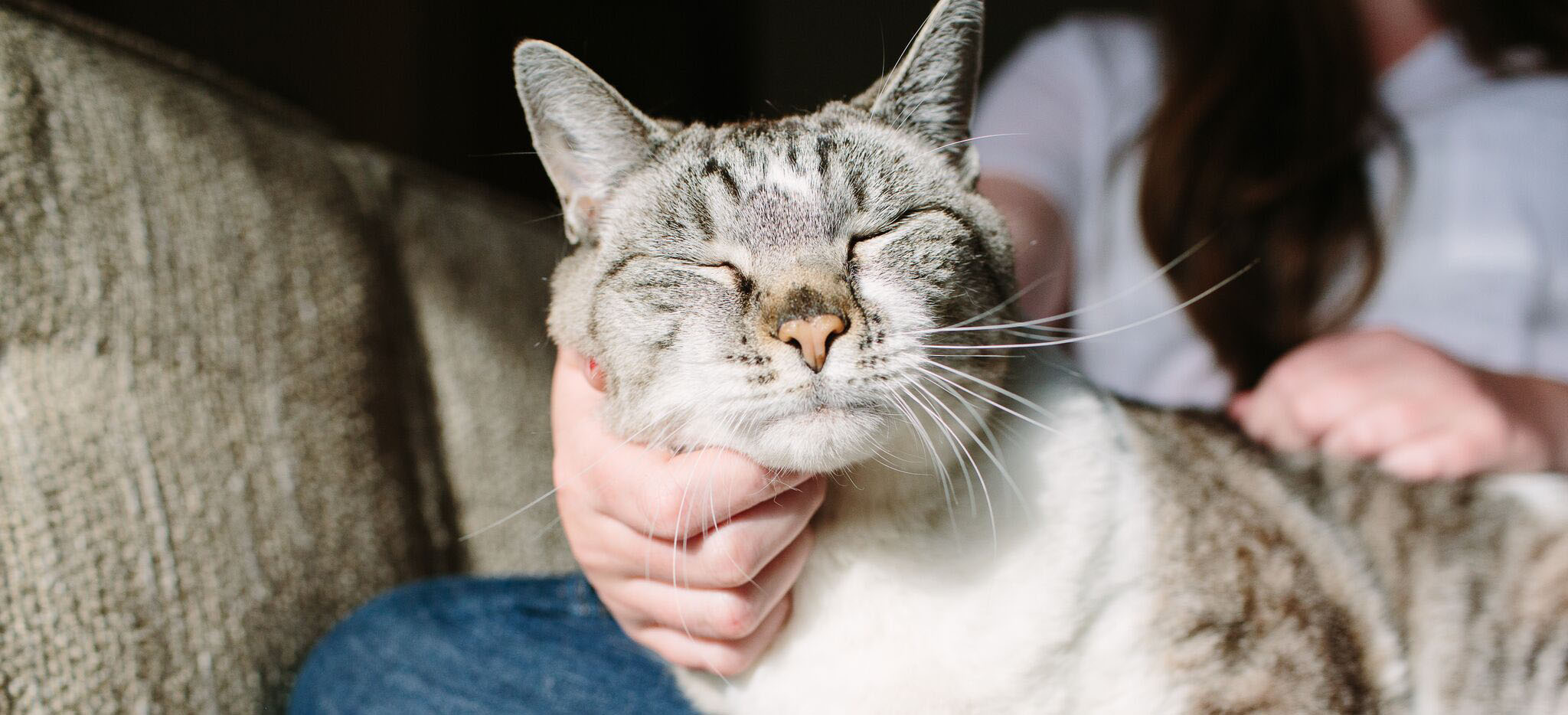
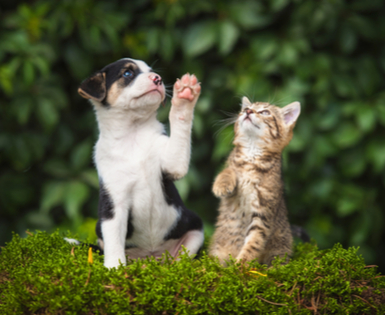
Your pet insurance policy already helps you to keep your cat or dog happy and healthy, but have you considered adding a wellness plan to your pet insurance policy? A wellness plan helps to keep costs down on routine care such as vaccines, boosters, cleanings, and more.
Do I Need Pet Insurance for My Dog or Cat?
How Does Pet Insurance Work?
In many ways, pet insurance is similar to other types of insurance. Different levels of coverage will be available, and premiums will vary based on the plan selected. Some plans cover only accidents and injuries, while more expensive plans will provide more coverage. Most plans have a deductible, which means you will have to pay a certain amount of the medical expenses. Like any insurance policy, the best scenario is never actually having to use it.
How Much Does Pet Insurance Cost?
The cost of pet insurance will depend on a variety of factors such as the age of your pet. Older pets may also have a pre-existing condition that may not be covered. In general, older pets have higher premiums simply because, like older people, older pets usually require more medical attention. If a pre-existing condition is excluded, however, pet insurance can still help pay for future medical expenses.
Your pet’s breed will also affect the cost of premiums. This is because some breeds are more prone to certain health issues requiring medical attention. Even though premiums may reflect this likelihood, insurance may be even more necessary since your pet is more likely to need medical care.
So Should I Get Pet Insurance?
Just because your pet might not be a “new” member of the family or catches every bug at puppy day care, you can tailor your plan to fit your needs. Pets Best allows you to find the right plan for your pet. By fine tuning your coverage, reimbursement, and deductible levels you can get the best match. There are also flat rate Accident Only plans, because even small levels of protection offered by pet insurance can be invaluable in an emergency.
Consider all of these factors when deciding which pet insurance plan is best for you, your pet and your budget. Investing in pet insurance is investing in your pet’s future health, and provides invaluable peace of mind.
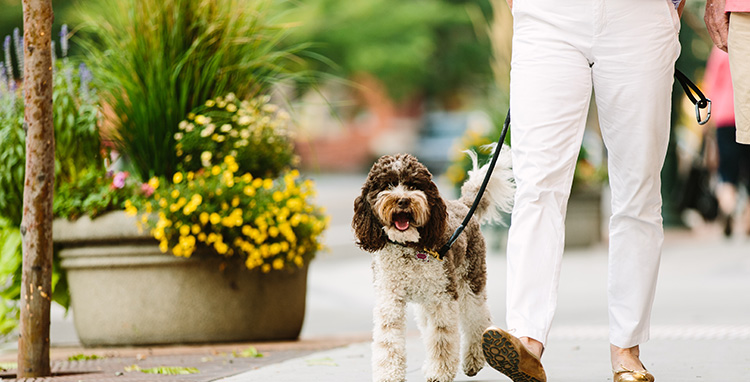
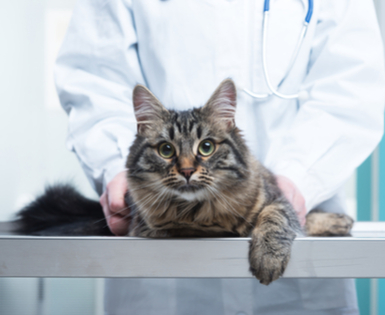
No pet owner likes to think about their pet getting sick or needing surgery. But accidents do happen and pets do get sick. Pet insurance provides you with the comfort of knowing your pet’s medical needs will be met in the event of illness or injury. Union Plus Pet Health Insurance reimburses cat and dog owners for veterinary expenses when their pets get injured.
Term Life or Accidental Death Insurance — Which is Right For Me?
Simplified Issue Term Life Insurance often has age-banded premium rates that change when you reach the next age bracket. Acceptance into the plan is based on a few quick health questions, but no medical exams or tests. For the first few years only deaths due to an accident may be covered. But once through the exclusionary period, all causes of deaths could be covered.
Term Life Insurance would be most valuable if you have a lot of recurring payments; homes, cars, education, all require financial resources and planning. Term Life can offer higher coverage levels that helps protect the lifestyle you are building with your family. In the event of your passing, your family can use the money from the insurance in any way they need.
Accidental Death Insurance may be a better choice for people with fewer obligations; houses paid off and an empty nest, or people just starting out on their own. Accidental Death policies are usually guaranteed issue – simply enroll and pay your premium to get coverage – because they only pay benefits for death due to a covered accident. The lower coverage amounts – and premium rates – can still give you the additional peace of mind knowing that you will not leave unpaid debt or expenses if the unexpected happens. And, here again, your beneficiaries can use the cash benefit in any way they need.
Considering insurance as part of your financial planning makes sense no matter where you are in your life. Helping to protect your family and assets with insurance can give your family more financial security and give you more peace of mind.
Go to www.unionplusinsurance.com for more information about the insurance offers available to you as a union member.
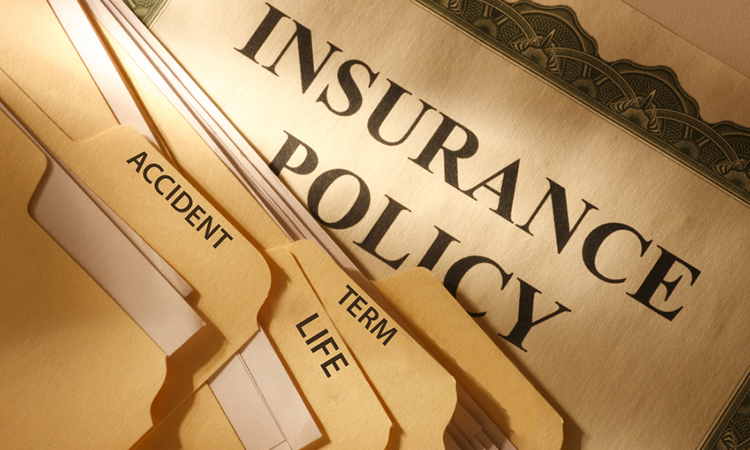
Underwritten by Hartford Life and Accident Insurance Company, Hartford, CT 06155. All benefits are subject to the terms and conditions of the policy. Policies underwritten by Hartford Life and Accident Insurance Company detail exclusions, limitations, reduction of benefits and terms under which the policies may be continued in force or discontinued. Life Form Series includes GBD-1000, GDB-1100 or state equivalent. Accident Form Series includes 7582, PA-5427, or state equivalent.
0318TVA
Choosing the right insurance products can be challenging – especially because many of us do not like to think about needing insurance at all! But insurance can be an important part of financial planning for any family. Understanding the different types of insurance available to you is an important part of deciding which option is best.
Five Heart Health Benefits of Owning a Pet
According to the American Heart Association:
- Improved Health Status of Heart Patients
Dogs ease anxiety and improve the health status of hospitalized heart failure patients.
- Anxiety Decreases
Researchers found that anxiety scores dropped 24 percent for participants who received a visit from the volunteer-dog team. Scores for the human volunteer-only group dropped 10 percent and the at-rest group’s score did not change.
- Decreased Stress
Simply having a pet in the room, decreases the stress response. Levels of epinephrine, a hormone the body makes when under stress, dropped about 17 percent in patients visited by a person and a dog, and 2 percent in those visited just by a person. But levels rose about 7 percent in the unvisited group.
- Heart Pressure Decreases
Heart pressure dropped 10 percent after the visit by the volunteer and dog. It increased 3 percent for those visited by a human volunteer and 5 percent for those who got no visit. Lung pressure declined 5 percent for those visited by a dog and a volunteer. It rose in the other two groups.
- Benefits Blood Pressure
People with a dog or cat suffered only half the blood pressure increase of those without.
Be sure to return the favor by protecting the health of your furry family members with the gift of pet insurance from Union Plus Pet Insurance.
LEARN MORE ABOUT THE UNION PLUS PET INSURANCE PROGRAM
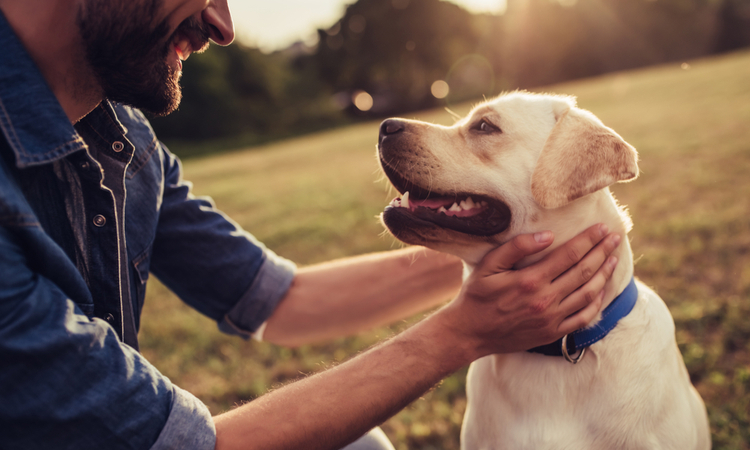
Pet insurance coverage offered and administered by Pets Best Insurance Services, LLC is underwritten by American Pet Insurance Company.
It’s no secret that animals and humans share a special bond. It’s also well known that being around pets can positively impact your health in measurable ways. In fact, there are numerous studies on the health benefits associated with being around animals. Here are just a few health-related reasons to spend more time with your pets.
How to Drive on Icy Roads
Icy roads are one of winter’s biggest dangers. Fortunately, you can take simple steps to keep you safer.
Change Your Tires
If cold, icy winters are common in your area, swap your regular tires for snow tires to gain more control. Snow tires have more contact edges than normal tires, allowing them to grip the road better. Also, the rubber on snow tires stays pliable in low temperatures, which helps provide better traction.
Drive Cautiously
- Think gradual. Quick movements, such as fast acceleration or sudden turns, have little effect on icy roads—you just spin your wheels or continue in the same direction. Slow your motions so your vehicle has time to respond. Brake gradually, too: Slamming on the brakes, even antilock brakes, can cause your car to slide. To give yourself enough time to brake, allow up to 10 times the normal distance between your car and the car ahead of you.
- Slow Down. Remember that posted speed limits are for ideal driving conditions. If the roads are icy, reduce your speed to reduce the risk of getting in an accident.
- Correction. If your car starts to skid or slide, take your foot off the gas. Slowly turn the wheel in the direction you want the car to travel. If your vehicle has antilock brakes, apply firm pressure until you regain control. You can steer during this maneuver. As your car spins, work to regain a neutral steering position. You have more control when your tires face the same direction.
Know the Roads
To stay ahead of icy roads, know when and where ice forms. Any winter precipitation can cause ice, as can sudden temperature changes. “Black ice” (a thin, almost invisible coat) is most likely to form on intersections, bridges, overpasses, underpasses and ramps. For more about dealing with black ice, follow this advice from MetLife Auto & Home.
Be Aware of Other Drivers
Driving slowly offers some protection from other drivers, but be sure to keep an eye on the cars ahead of and behind you. If you see brake lights ahead, slow down. If a driver follows closely behind your vehicle, keep a slow pace to force him or her to do the same.
These tips were brought to you by the Union Plus Auto and Home Insurance program. Drivers saved an average of $586* a year on their auto insurance when switching to MetLife Auto & Home®.
Take advantage of the Union Plus Auto and Home Insurance Program by calling 855-666-5797 today. Remember to mention your discount code: DJ7.

*Savings based on our 2018 countrywide research of new call center customers’ annual average savings in 2017. Statistics do not reflect sales of the product sold on MetLife Auto & Home MyDirectSM.
Group Discounts are filed on an individual basis in MA and may not be available as part of MetLife Auto & Home's benefit offering.
MetLife Auto & Home is a brand of Metropolitan Property and Casualty Insurance Company and its affiliates: Economy Preferred Insurance Company, Metropolitan Casualty Insurance Company, Metropolitan Direct Property and Casualty Insurance Company, Metropolitan General Insurance Company, Metropolitan Group Property and Casualty Insurance Company and Metropolitan Lloyds Insurance Company of Texas, all with administrative home offices in Warwick, RI. Coverage, rates and discounts and policy features vary by state and product, and are available in most states to those who qualify. Met P&C®, MetCasSM and MetGenSM are licensed in the state of MN.
© 2018 MetLife Auto & Home
L1016481659[exp0919][All States][DC]

Slick streets? Take precautions! These tips can help improve your safety.
Stop These Top Five Distracting Driving Habits
Consider these five distracting driving habits and how to change them:
- Eating or drinking
Hot coffee spills, greasy hands or stray crumbs could distract you from the road. Eat before you get behind the wheel or after you’ve reached your destination. If you need a snack now, find some place off the road to stop.
- Making hands-free calls
You may not take your hands off the wheel, but calls can take your mind off the road. Turn off your phone’s Bluetooth capabilities before you drive off, and silence your phone to help prevent temptation. If you really need to make a call, safely pull over to talk.
- Messing with dials or controls
Adjusting volume, looking for a radio station, plugging in GPS directions or turning up the heat diverts your eyes from the road. Take care of all of the above before shifting into gear. If you must make adjustments, wait until you come to a complete stop at a stoplight, pull over safely, or ask your front-seat passenger to handle them.
- Paying attention to other passengers
Young children and infants can be up to eight times more distracting than adult passengers, according to the AAA Foundation for Traffic Safety. Make sure your little ones have something to occupy them. Or stop the car and pull over safely before investigating the cause of screaming or crying.
- Applying makeup or shaving
The vanity mirror blocks your eyes from the road. Give yourself enough time before leaving home to finish getting ready.
As a union member, you have access to auto insurance with MetLife ChoiceSM allowing you to quickly and easily compare auto coverage from top insurance companies.
Call 855-666-5797 and mention your discount code: DJ7.
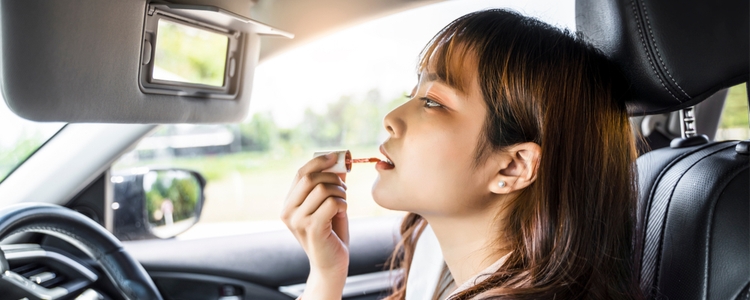

It's harmless to sip your coffee on the way to work, right? Maybe not so much!
Some of the things you do regularly behind the wheel have become so ordinary you might not realize you’re driving distracted and may be at risk of a car accident. But if your eyes, hands or mind are focused on anything but driving, you fit the National Highway Traffic Safety Administration’s definition of a distracted driver.
New Pet Checklist
- Food
Choosing a food that’s appropriate for your new pet can be overwhelming. With hundreds of brands available, it can be difficult to sort through all of the options for a good pet food. Be sure to choose a diet that is consistent with your new pet’s age and size. For example, a 6 month old Chihuahua should eat a small breed puppy food, while an 8 year old Great Dane should eat a giant breed senior formula. Be sure that your pet’s new food contains an AAFCO feeding statement – this means that the food has been scientifically tested and proved to be healthy! Ask your veterinarian for a recommendation on the best foods available and remember, while cheap foods tend to be poor quality, the most expensive food isn’t always the best. - Bedding
Your new pet will need a place to safely and comfortably rest after a long day of playing. If you plan to allow your new pet on the bed and sofa, they may not need their own bed as they will surely prefer yours! However, pets who will sleep in a crate at night or on the floor need an appropriately sized bed. Make sure that the bed is large enough for them to sprawl out comfortably and made from soft padding. Beds need to be washed, so a machine-washable fabric is best.
- Crate or Carrier
New cats and kittens will need a carrier to safely transport them from the house to the veterinary office. New Puppies and dogs often need a crate as a safe place to sleep at night and when left alone at home. Crating your new puppy or dog will keep him safe from chewing on electrical cords, getting into toxic foods and chewing up your favorite pair of shoes! Crates are also very helpful when house training your new pet. Once your puppy or dog is comfortable in the house, potty-trained at night and no longer at risk of getting themselves hurt while unsupervised, you may no longer need the crate. Pets who are prone to getting themselves in trouble (getting into the trash, chewing up household items, counter surfing or fighting with housemates) at any age should be crated while unsupervised no matter what age they are. Providing your new pet with a comfortable carrier or crate that is big enough for them to turn around in also provides them with a “safe place” to hide when the stress of holiday parties and extended family are around.
- Veterinarian
If this is your first pet, you will need to establish a healthcare provider to make sure your new furry friend is healthy. Be sure to schedule your new pet a proper checkup. Preventative care for new pets includes updating vaccines, spaying or neutering, testing for contagious diseases, prescribing heartworm prevention, and having the teeth cleaned in adult pets. Your vet should also assess any skin issues, allergies, runny eyes, ear infections, lumps or bumps. Establishing a veterinarian is an important first step so that you will know who to call in an emergency.
- Pet Insurance
When you adopt a new pet, you also adopt the potential for health issues, injuries and illness. Getting health insurance on your fluffy family member will give you peace of mind that if anything should happen, you won’t have to think twice about healthcare decisions and costs. An after-hours emergency bloat surgery can be anywhere from $3,000-$6,000 depending on what area of the country you are located. Chocolate ingestion in a dog or Lilly flower ingestion in a cat can run several hundred to several thousand dollars for treatment. Parvo treatment on your new puppy is typically $1,000-$2,000 depending on the severity of the illness. Proper healthcare for your pet can be expensive if you pay out of pocket. Having pet insurance provides you and your pet with a financial safety net in the event of illness or injury, even if you accidentally left the chocolate in Fluffy’s reach or you accidentally ran over Rover in the driveway. Pet health insurance means you don’t have to make difficult life and death decisions or skimp on great care for financial reasons.
- Microchip and ID Tag
Accidents happen and sometimes pets get lost. Make sure that your new pet is microchipped immediately and that the microchip company has your complete, updated information should your new pet go missing. In addition, be sure that your new pet has an ID tag on his or her collar that contains your contact information. Tags can be removed and lost, so a Microchip is extremely important. However, ID tags are a very easy way for Good Samaritans to contact you immediately without needing to take your pet to a veterinary clinic to be scanned for the microchip.
- Collar, Leash, Toys, etc.
Don’t forget all the fun stuff! Your new pet will need a collar and leash/harness. Toy are important as they provide entertainment and exercise to both cats and dogs. Bored pets tend to misbehave, so keep your new family member engaged with proper chew toys to chase and play with.
Learn more about the Union Plus Pet Insurance Member Benefit, powered by Pets Best at: https://www.unionplus.org/benefits/insurance/pet-health-insurance.
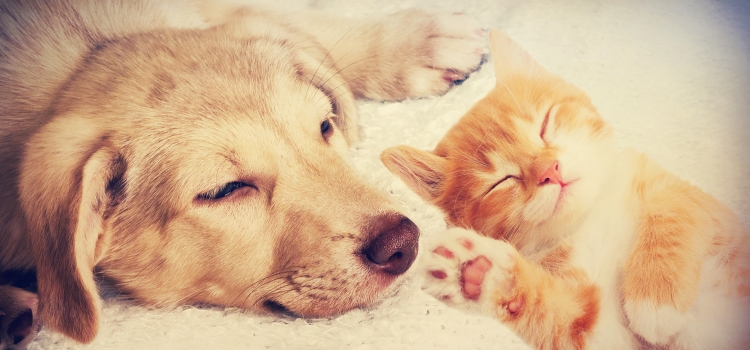
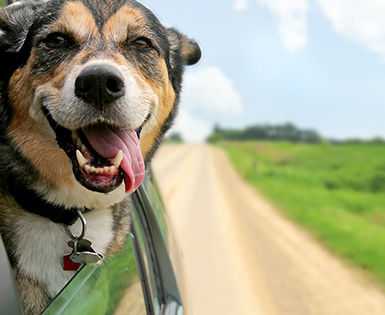
During the holidays many people add a new furry family member to their household. If you find yourself with a new pet this season, make sure the basics are covered by including these 7 must-haves on your checklist!
Seven Must-Haves for Your New Pet
- Food
Choosing a food that’s appropriate for your new pet can be overwhelming. With hundreds of brands available, it can be difficult to sort through all of the options for a good pet food. Be sure to choose a diet that is consistent with your new pet’s age and size. For example, a 6 month old Chihuahua should eat a small breed puppy food, while an 8 year old Great Dane should eat a giant breed senior formula. Be sure that your pet’s new food contains an AAFCO feeding statement – this means that the food has been scientifically tested and proved to be healthy! Ask your veterinarian for a recommendation on the best foods available and remember, while cheap foods tend to be poor quality, the most expensive food isn’t always the best.
- Bedding
Your new pet will need a place to safely and comfortably rest after a long day of playing. If you plan to allow your new pet on the bed and sofa, they may not need their own bed as they will surely prefer yours! However, pets who will sleep in a crate at night or on the floor need an appropriately sized bed. Make sure that the bed is large enough for them to sprawl out comfortably and made from soft padding. Beds need to be washed, so a machine-washable fabric is best.
- Crate or Carrier
New cats and kittens will need a carrier to safely transport them from the house to the veterinary office. New Puppies and dogs often need a crate as a safe place to sleep at night and when left alone at home. Crating your new puppy or dog will keep him safe from chewing on electrical cords, getting into toxic foods and chewing up your favorite pair of shoes! Crates are also very helpful when house training your new pet. Once your puppy or dog is comfortable in the house, potty-trained at night and no longer at risk of getting themselves hurt while unsupervised, you may no longer need the crate. Pets who are prone to getting themselves in trouble (getting into the trash, chewing up household items, counter surfing or fighting with housemates) at any age should be crated while unsupervised no matter what age they are. Providing your new pet with a comfortable carrier or crate that is big enough for them to turn around in also provides them with a “safe place” to hide when the stress of holiday parties and extended family are around.
- Veterinarian
If this is your first pet, you will need to establish a healthcare provider to make sure your new furry friend is healthy. Be sure to schedule your new pet a proper checkup. Preventative care for new pets includes updating vaccines, spaying or neutering, testing for contagious diseases, prescribing heartworm prevention, and having the teeth cleaned in adult pets. Your vet should also assess any skin issues, allergies, runny eyes, ear infections, lumps or bumps. Establishing a veterinarian is an important first step so that you will know who to call in an emergency.
- Pet Insurance
When you adopt a new pet, you also adopt the potential for health issues, injuries and illness. Getting health insurance on your fluffy family member will give you peace of mind that if anything should happen, you won’t have to think twice about healthcare decisions and costs. An after-hours emergency bloat surgery can be anywhere from $3,000-$6,000 depending on what area of the country you are located. Chocolate ingestion in a dog or Lilly flower ingestion in a cat can run several hundred to several thousand dollars for treatment. Parvo treatment on your new puppy is typically $1,000-$2,000 depending on the severity of the illness.
Proper healthcare for your pet can be expensive if you pay out of pocket. Having pet insurance provides you and your pet with a financial safety net in the event of illness or injury, even if you accidentally left the chocolate in Fluffy’s reach or you accidentally ran over Rover in the driveway. Pet health insurance means you don’t have to make difficult life and death decisions or skimp on great care for financial reasons.
- Microchip and ID Tag
Accidents happen and sometimes pets get lost. Make sure that your new pet is microchipped immediately and that the microchip company has your complete, updated information should your new pet go missing. In addition, be sure that your new pet has an ID tag on his or her collar that contains your contact information. Tags can be removed and lost, so a Microchip is extremely important. However, ID tags are a very easy way for Good Samaritans to contact you immediately without needing to take your pet to a veterinary clinic to be scanned for the microchip.
- Collar, Leash, Toys, etc.
Don’t forget all the fun stuff! Your new pet will need a collar and leash/harness. Toy are important as they provide entertainment and exercise to both cats and dogs. Bored pets tend to misbehave, so keep your new family member engaged with proper chew toys to chase and play with.
Learn more about the Union Plus
Pet Insurance Member Benefit, powered by Pets Best
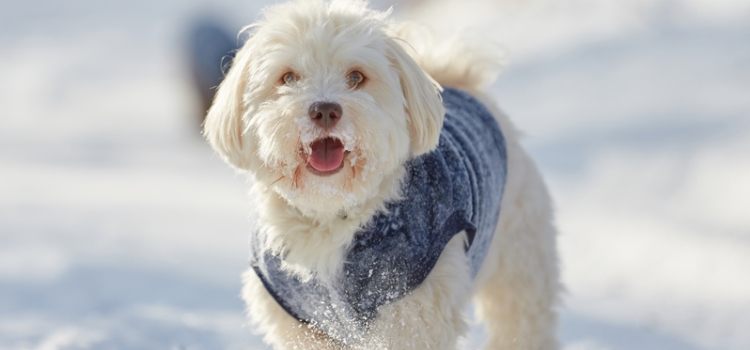
During the holidays many people add a new furry family member to their household. If you find yourself with a new pet this season, make sure the basics are covered by including these seven must-haves on your checklist!
Winter Safety Checklist for Pet Owners
- Use “Pet-Friendly” Antifreeze
Thankfully, it’s well publicized that antifreeze is tempting to pets, as well as a detriment to pet health. Accidental ingestion is a big reason why pet owners are so thankful for the services of their pet insurance company every year.
Some antifreeze brands have an added bitterant to keep pets and children from ingesting it, and others, like Prestone LowTox Antifreeze Coolant, are less toxic blends. You should still be careful to keep your pet away from it, but if accidental ingestion should occur, results may not be fatal.
- Bang on Your Car Hood Before Starting the Car
Feral and loose cats know how to find warm sleeping spots, often including wheel wells and warm car engines. Too often, these cats are run over or maimed by rotating fan belts or engine components. Get in the habit of always banging on the hood as you approach your car, and then honking the horn before you start it, to scare away potential heat seekers.
- Screen Your Fireplace
Cats love to use fireplace soot as cat litter, but should never be allowed to get in the habit of entering an open fireplace. Secure screens or glass doors to fireplaces. Here’s a helpful video showing how. Another option is laying something undesirable in front of the fireplace, like double sided tape or a “scat mat.”
- Microchip or Invest in a GPS Collar
Microchipping is a great way to ensure your pet always has identification, but the chips only work if your pet is found and scanned correctly. A GPS pet tracking collar is a great backup, especially in the winter. Of course, leash safety should be of prime concern year-long, but microchips and GPS collars can really pay off if your dog becomes lost.
If a winter-related accident or illness occurs with your pet, be sure to call your veterinarian immediately so they can help you determine what to do next. Unexpected veterinary visits can be expensive but that’s where pet insurance can help, by reimbursing on veterinary bills.
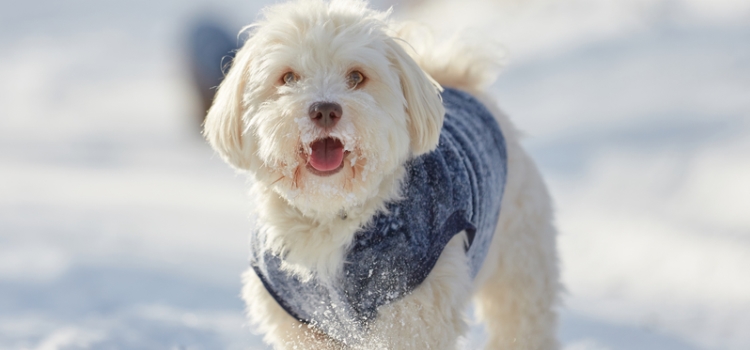
The winter months bring cold temperatures and snow to most parts of the country, presenting several safety hazards to our pets. Here are four (not so obvious) best practices for pet parents to keep their dogs and cats safe this winter.